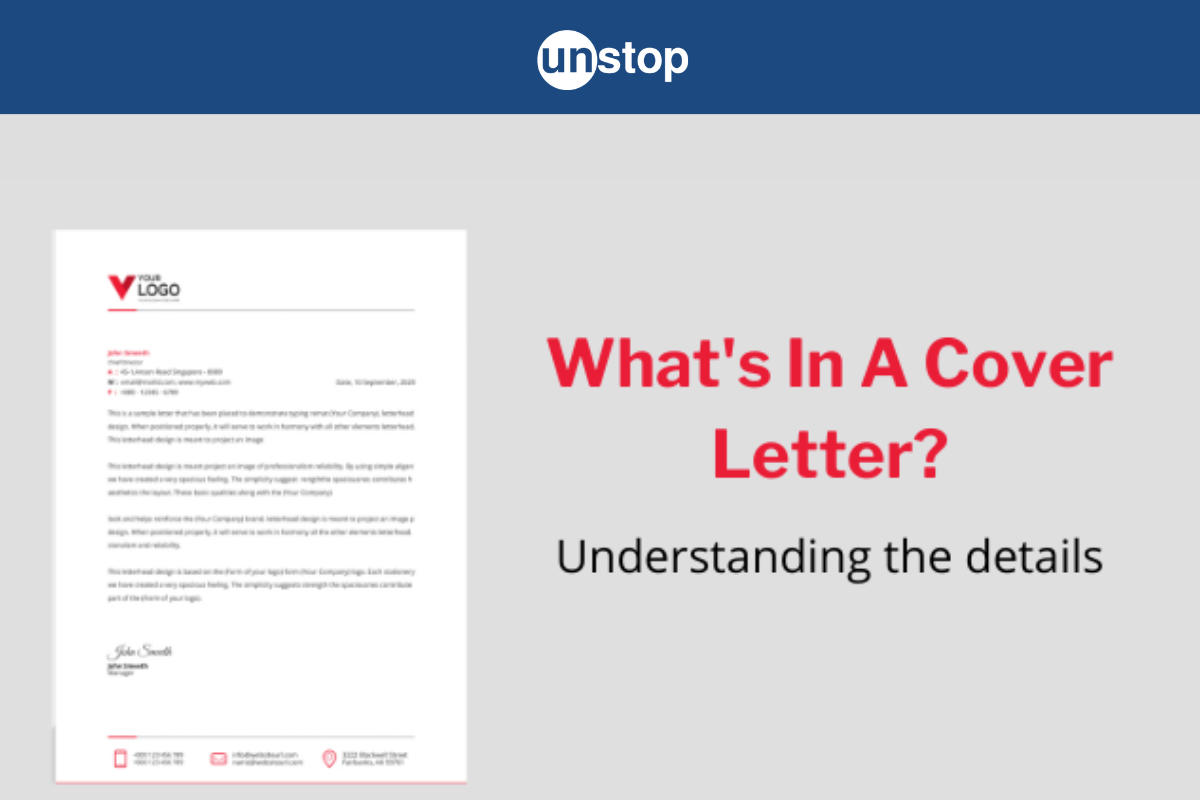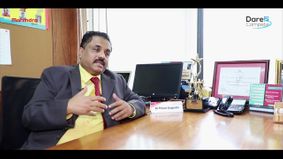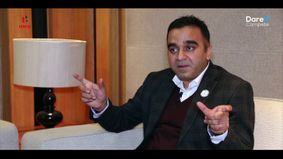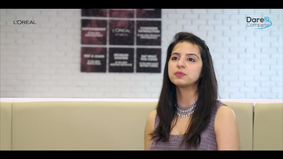- What is a Cover Letter: Importance
- Do's and Don'ts of a Cover Letter
- Types of Cover Letters
- How to Write a Cover Letter?
- Final cover letter writing tips
What Is A Cover Letter? Meaning, Importance, Tips And More!

A cover letter is a one-page document that job seekers submit to a recruiter (along with their resume) as part of their job application. It is used to introduce you and briefly summarize your professional career. A standard cover letter length should ideally be within the range of 250-400 words.
A good cover letter will appeal to recruiting managers and get them to read your resume. On the other hand, a bad cover letter can mean that your application is lost among the piles of paper. In order to make sure that your job application stands out, it is important to know how to write a compelling cover letter.
What is a Cover Letter: Importance
The cover letter is more than just a personal introduction. This is a way to show more value to your company and explain how well you fit in their organization. This is the best chance for you to show that you are the perfect candidate for the job openings.
The cover letter serves as a first impression and gives you the opportunity to stand out as an ideal candidate and talk about your professional skills. It's also a great place to further explain some of your relevant experiences and share your compelling story with them. If it appeals to your potential employer your cover letter has served its purpose.

Do's and Don'ts of a Cover Letter
Since the cover letter serves as the first communication between you and your hiring manager therefore it is imperative to keep certain points in your mind before you go on writing it.
Explain how you can help
Elaborate on your core skills and professional experience listed in your resume. Try to establish a connection to the job requirements and the skills they need and explain how you can achieve the same results with the new company. For example, if you increased customer retention by 20%, explain in detail how you accomplished the feat and what you might do to repeat it with your new company.
Don't focus on what the job can do for you
Some applicants use a lot of space on their cover letters to explain how the position is a dream job to them or how long they have yearned to work there. The information is flattering but consider including practical information that emphasizes your splendor as an employee and what you offer.
Discuss your skills
Many resumes only list relevant skills, but cover letters can help you further explain how you are using those skills. Think about how your previous position helped you, and if necessary, share a brief story about when your skills contributed to your ability to perform your job.
Do not focus on your current job title or educational background
Your education and current or previous positions are important. Use the cover letter space to explain why it's worth it, rather than repeating it. For example, instead of listing degrees, explain what you have learned, such as the skills you have acquired in the process.
Research your company
Applicants should look for pages on their employer's website that explain the company's history, mission, and values. Get a deeper understanding of who your company is and implement that knowledge in your cover letter. Try to establish a connection between the company's mission and vision and your employment history, personal and professional career goal, and aspirations. This will increase the competitiveness of applicants and increase the chances of the hiring manager summoning you for an interview.
Do not mention negative media references
If you find a news article or other one-sided information, do not mention it in your cover letter. Get a complete picture of who your company is and focus on the positive information you see in the letter.
Include specific keywords
What is a keyword in a cover letter? A 'keyword' refers to specific terms or phrases that are relevant to the job or industry. These keywords are typically used to convey to hiring managers or automated applicant tracking systems (ATS) that the candidate possesses the desired skills, qualifications, and experience for the position.
Companies with a large number of applications submit resumes and cover letters to dedicated software that searches for keywords. The company establishes a list of keywords to search for, and the software categorizes them accordingly. A resume with a certain number of preferred keywords is placed at the top, and resumes with few or no keywords are discarded. Read job descriptions and look for words that repeat. Once you have identified them, use those words frequently in your cover letter. If you implement this smartly, you may move to the next rounds of the hiring process sooner than you think.
Do not enter too many keywords
Some software identifies when text includes an unnatural amount of certain keywords and either rates them poorly or tosses them. When drafting your cover letter, write it with well-organized thoughts and sentence structure. Once it passes software inspection, a real human being reads your cover letter, so make your information count.
Ask someone to review your cover letter
Once you have completed writing your cover letter, ask a relied-on friend, mentor, or preceding co-worker to give their feedback. Ensure that they are able to present beneficial recommendations on cover letters and go through them with a critical eye.
Edit your cover letter thoroughly
Your cover letter is your first impression. If the letter is misspelled or grammatically incorrect, this is the company's first impression. Take as much time as you need to draft cover letters before deciding what is worth submitting. Do give great attention to the language and tone of the cover letter. In case any grammar errors have crept in, correct them.
Add new content to your cover letter
Use the cover letter to elaborate on yourself, your skills, and your achievements. Don't delve too deep into personal details. Extend your resume by adding context and other information that couldn't be included in your resume. Make sure your cover letter has a completely different reading experience that introduces you to the company.
Do not repeat the information from your resume
Some cover letters simply reintroduce the same information from the resume in prose format. A convincing cover letter delivers information that is not mentioned in the resume, this, in turn, further strengthens your position as a candidate.
Types of Cover Letters
There are various categories of cover letters depending on their purpose and who the recipient is. These include application cover letters, prospecting cover letters, and networking letters, among others. These three types can be tailored to situations such as email delivery, referrals, or specific industries. In the following, you will learn about 6 types of cover letters, both primary and situational.
Following are the six types of Cover Letters :
1. Application Cover Letter
2. Prospecting Cover Letter
3. Networking Cover Letter
4. Email Cover Letter
5. Industry-Specific/Career-Specific Cover Letter
6. Referral Cover Letter
1. Application Cover Letter
The cover letter used when submitting a resume or applying for a job is called a cover letter. The
cover letter needs to be individually tailored to the location you are applying for. One tip to use when writing a cover letter is to use as many keywords in your job description as possible to define your skills. This works especially well if the company has an automated HR system programmed to separate resumes under the right conditions for review.
2. Prospecting Cover Letter
A prospecting cover letter is a primary type of cover letter that you use when inquiring about openings at a company that you aspire to work for. It`s called a prospecting cover letter because you use it when selecting companies to target to fulfill career growth.
3. Networking Cover Letter
Think of everyone in your network that can help you find a job. Networking cover letters are the primary form of seeking help, advice, and vacancies or new job postings within your network. Even if you are new to the workforce, you probably have people in your network of professionals you can trust. Start by reaching out to a university professor teaching in your desired industry, friends and family with a large network of professionals, ex-colleagues, and employers who admire you.
4. Letter via Email
If you email any of the above letters, it is recommended that you use a certain cover letter formatting that is more suitable for your email. This context-sensitive cover letter is not only reader-friendly but also reduces the confusion caused by the practices required only for a formal cover letter. Email cover letters are usually short and contain a lot of blanks. Do not forget to cross-check the mailing address (email address) before dispatching the mail. The mailing address is case-sensitive, and candidates should take due care of that.
5. Industry-Specific/Career-Specific Cover Letter
An industry or career-specific cover letter provides a context that highlights your industry or relevant work experience. If your career path is primarily in one industry and it's the same industry you're trying to grow, an industry-specific cover letter will make it clearer why you're a strong candidate. Recognize industry or work-related practices based on your specific experience, which may be better than traditional cover letters to provide insights.
6. Referral Cover Letter
A letter of recommendation not only gives you the opportunity to introduce yourself but also shows the name of the person who introduced you to that position. Referrals can be an important resource in your job hunting if the referrals are reliable and have a good relationship with the company you are applying for. If you apply through a referral, you can get the hiring manager's attention by notifying you in advance of the cover letter.
How to Write a Cover Letter?
Cover letter content has basic core elements and a flexible structure that may vary depending on the type of cover letter you choose or the situation in which you are inquiring. In order to frame a successful cover letter from scratch make sure you have all the basic elements included:
Introduction
Cover letter opening paragraphs are what the reader sees and it offers the preliminary creation as to who you are. You must additionally encompass the date in a conventional cover letter; however, it is now no longer necessary for all types.
Once you have provided some basic information about yourself like name, contact details, professional title, current position, etc., use an overview to provide context. Use standard greetings such as "Hello" and "Hello". As a general rule, it's better to call the hiring manager by name rather than obscuring the greeting.
Initiate by mentioning the position
In the first paragraph, state your position and show your enthusiasm for that role. If you are referred to a company, use this section to emphasize your interconnection. The first paragraph of the cover letter is important, so think of a well-structured sentence of 20 words or less that catches your attention. You can also add something new or achievement, or ask the reader a rhetorical question to give this first paragraph a compelling context.
Talk about your soft skills, experience, achievements, and qualifications
The next two paragraphs will focus on storytelling, which aims to reveal the information you want potential employers to know about you. Start with transferable skills you learned in your previous jobs, experience, and notable achievements in one section of the main part and link them to your own qualifications in the other sections.
Carefully choose which experience in this section makes the most sense. The important thing is to be clear and concise. It's better to tailor the cover letter to your position needs than to include everything in your resume, so you need to choose the skills and outcomes you choose.
At this point, carefully read the job description you want to secure in this letter. If the keywords get your attention, work them on your skills and experience with duplication.
Cover letter closing: Conclude succinctly and use a call to action
Your closing paragraph should take place in just a few sentences. These include a very condensed summary of why you are a good fit and a call to action.
End with a signature line
It`s highly recommended in all types of cover letters that you include a closing salutation and sign your name, either physically or digitally, depending on the format.
Final cover letter writing tips
1. Customise the cover letter header based on your application format
Suppose you write the cover letter directly on the online application. In that case, you do not need to provide your address or other contact details as you may have already entered them in other areas of the application. If you include the cover letter as an attachment, you can use the same heading as your resume.
2. Use an Appropriate Greeting.
If you know the name of the recruitment manager for this position, address the cover letter directly to him (Eg, Dear Rajeev Bansal). If you don't know the name of the hiring manager, you can start the letter with a simple "Hello" or "Hiring Managers". When deciding on a greeting format, understand the corporate culture. More formal referrals such as "To Whom It May Concern" and "Dear Sir or Madam" may seem restless to some organizations, but greetings such as "Hey!" And "Hello" are almost always. Looks casual as a cover letter.
3. Avoid Generic References to your abilities.
Whenever possible, use meaningful anecdotes that link your skills to specific problem-solving activities or specific business outcomes that you have worked on throughout your career. Any candidate can say that they have the desired skills. To make a difference, you need to show the hiring manager an example of real skill.
4. Keep it Short and to the point.
Unless specified in the job description, there is no required length for a cover letter. When determining how long a cover letter should be, focus on the details that are most important for the job.
5. Proofread before you submit.
Read several times before sending the cover letter, looking for spelling, grammar, and punctuation errors. Reading the letter aloud can help you find silly phrases and long sentences. If the salute contains the name of the hiring manager, check the spelling three times.
Here is a list of Sample Cover Letter Template that you can refer to make your own perfect cover letter.
If you are applying to a company from the field of finance use this sample cover letter for reference.
You may also like to read:
- How I became Capgemini’s E.L.I.T.E Management Trainee? By Koustubh Haridas, XLRI Jamshedpur
- Why Do You Want To Work Here? Know Tips And Tricks To Answer This Question During Interview
- “What Is Your Greatest Weakness?” Answer The Uncanniest Interview Question Like A Pro
- How To Have A Good Subject For Email For Job Application?
As a biotechnologist-turned-writer, I love turning complex ideas into meaningful stories that inform and inspire. Outside of writing, I enjoy cooking, reading, and travelling, each giving me fresh perspectives and inspiration for my work.
Login to continue reading
And access exclusive content, personalized recommendations, and career-boosting opportunities.
Subscribe
to our newsletter
















Comments
Add comment